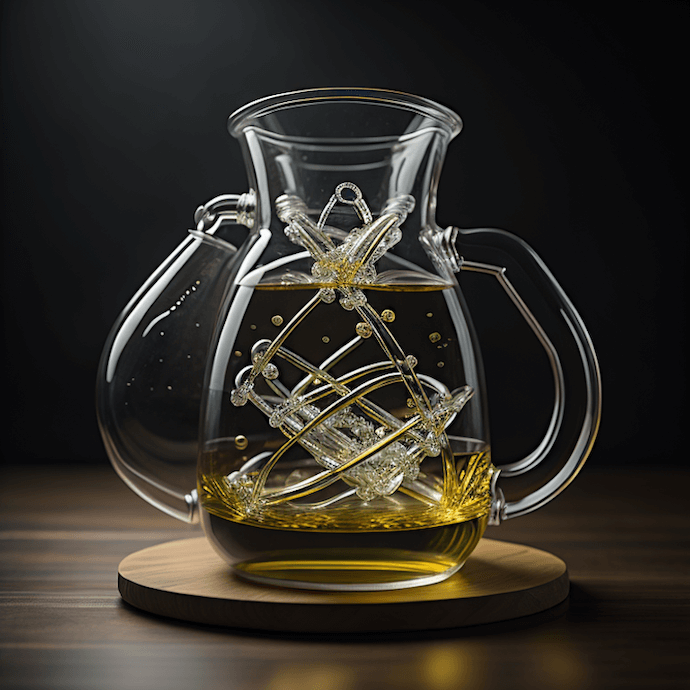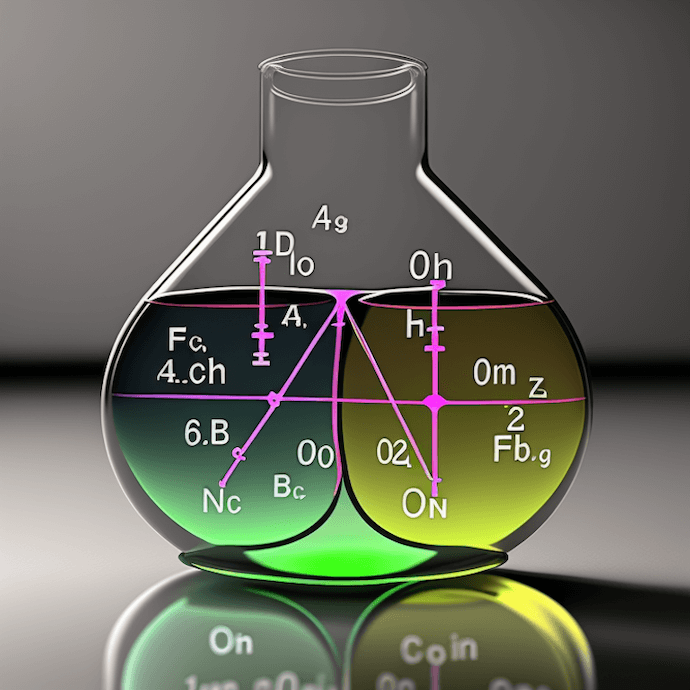What is the fluorine ion charge?
The fluorine ion charge is an important aspect of chemistry that you need to understand.
Let’s review the properties of this ion and how it affects chemical reactions.
The fluorine ion has a charge of -1.
This is because fluorine has seven electrons in its outermost shell, which gives it one extra electron and thus gives it a negative charge.

What is the fluorine ion charge?
The fluorine ion charge is technically denoted as -1, meaning that the atom carries one more electron than protons.
The fluorine ion has a charge of -1.
8 key points about the fluorine ion charge:
- Fluorine is a halogen and the most electronegative element in the periodic table. It has 7 electrons in its outer shell.
- When fluorine forms an ion, it gains 1 electron to fill its outer shell and reach the stable octet configuration.
- By gaining an electron, the fluorine atom becomes an anion with a net negative charge.
- The fluoride ion, with a filled valence shell and an extra electron, has a charge of -1. This is denoted as F-.
- The electronegativity of fluorine (4.0 on the Pauling scale) allows it to pull electrons towards it during bond formation, resulting in the negative charge of the fluoride anion.
- Fluorine forms ionic compounds by combining with metals. The attraction between the negatively charged fluoride ion and the positive metal cation forms the ionic bond.
- Common examples of fluoride compounds include sodium fluoride (NaF), calcium fluoride (CaF2), and potassium fluoride (KF).
- The -1 charge gives fluoride distinctive properties like the ability to dissolve many metal oxides and silicates. This makes it useful in applications from toothpaste to glass etching.
So in summary, the fluorine ion carries a stable -1 charge when it gains an extra electron in its outer valence shell. This highly electronegative element readily forms the F- ion.
Explain it to a child
The fluorine ion has a charge of -1 because it has seven electrons in its outermost shell. Having seven electrons gives it an extra electron, which gives it a negative charge.
This is a process known as oxidation and results in the far more reactive chemical behavior of a fluorine atom compared to other elements in its group on the periodic table.

Fluorine ions are prevalent in many compounds including those found in hygiene products like:
- Toothpaste
- Mouthwashes
- Drinking water
- Plastic manufacturing
Where they can be used for advantageous seasoning or surface protectant purposes.
Why does fluorine have a 1 charge?
Fluorine, the chemical element with an atomic number of 9, is found to have one overall electron and a single proton.
What makes fluorine special is its ability to form temporary bonds with other elements due to its 1 charge.
This strength of attracting electrons allows it to form strong chemical bonds that make it difficult for the outer electrons to be removed, making it one of the most electronegative elements, thus giving it a 1 charge.
While no atoms are totally stable on their own, fluorine compensates for this with its strong chemical bonds and its unique ability to collect electrons from other molecules.
All in all, fluorine’s 1 charge allows it to create strong yet temporary bonds which give other elements stability and help them maintain their characteristics.
Properties and characteristics of this fluorine ion
Fluorine is a chemical element with the symbol F and atomic number 9.

- It is the most electronegative of all elements, meaning it has an exceptional affinity for electrons and can gain or lose them readily to form electric compounds.
- It is a pale yellow gas at room temperature and becomes liquid at -188°C—the coldest among all known elements.
- Fluorine’s properties also include being highly toxic and reactive with most organic compounds and an oxidizing acid that rapidly reacts with water and air to form hydrogen fluoride (HF), which is a dangerous hazardous acid.
The fluorine ion has a single negative charge, making it useful in several chemical applications like complex synthesis pathways and other inorganic reactions.
In short, fluorine is a hazardous yet essential element within chemistry, making its study indispensable to many branches of science.
How the fluorine ion affects chemical reactions
The fluorine ion is an incredibly powerful catalyst in many types of chemical reactions.
Thanks to its electronegativity, the molecule gathers energized electrons from other atoms in a reaction, allowing for a more rapid and efficient reaction.
- This makes it possible for compounds to merge together quickly and readily produce incredible results.
- The remarkable thing about the fluorine ion is that it can affect things on a molecular level—leaving behind no chemical traces of its own that could complicate or distort the reaction.
In some cases the fluoride ions can even inhibit certain types of dangerous catalytic chemical reactions, making it a key ingredient in ensuring safety during critical experiments.
Examples of uses for the fluorine ion charge
The fluorine ion charge has a variety of potential applications, from medical research to water purification.

- In the medical field, the fluorine ion charge can be used to identify calcium-binding proteins or DNA-binding proteins.
- In water utilities, the process of electrocoagulation uses the application of electric current with the fluorine ion charge being one of the key ingredients in its success.
- The fluorine ions accelerate and facilitate the oxidation rate of organic substances.
This makes electrocoagulation an effective approach for treating wastewater and removing hazardous pollutants.
On the other hand, it can also be applied within the industry to condition burnt-out equipment, where eliminating high levels of contaminants is crucial for reliability, productivity, and ensuring product quality standards are met.
Clearly, there are many uses for this powerful ion charge – each with its own set of associated benefits.
Article Sources
Jacks of Science sources the most authoritative, trustworthy, and highly recognized institutions for our article research. Learn more about our Editorial Teams process and diligence in verifying the accuracy of every article we publish.
